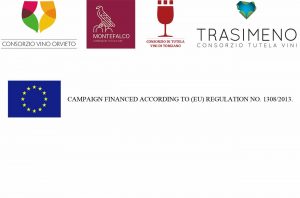Umbria is central Italy in a microcosm: innovation counterbalanced against tradition. Its beautiful vineyards, across the subregions of Montefalco, Orvieto, Trasimeno and Torgiano, define a timeless and landlocked region that remains one of Europe’s most unspoiled. The Umbria region boasts a distinct winemaking culture – first introduced by the ancient Etruscans – with a mosaic of different terroirs; altitude, soil, terrain and above all ideas, which vary enormously in the zone.
Many of Umbria’s finest reds are made in the Montefalco Sagrantino subzone, awarded DOCG status in 1992. In the vineyards south of Perugia, winemakers coax great finesse and concentrated brilliance out of the indigenous Sagrantino grape, which thrives in the calcareous soils of Montefalco.

Montefalco
The Montefalco DOC region is also celebrated. Blends of Sangiovese and Sagrantino are the local trademark, producing elegant and expressive red wines that pair well with local delicacies like black truffle and porchetta (young roasted suckling pig stuffed with fennel and garlic). Montefalco Bianco, meanwhile, is an underrated treasure. Single-varietal whites and blends of Grechetto and Trebbiano Spoletino, are made in the zone, although many regard 100% Trebbiano Spoletino as the summit of achievement.
West of Perugia, Colli del Trasimeno DOC, around the picturesque Lake Trasimeno, produces excellent wines of all three colours. A wide palate of grape varieties, including Grechetto, Chardonnay, Sangiovese and Merlot and the area’s own Trasimeno Gamay are grown here. Trasimeno’s Metodo Classico wines, meanwhile, prove that Umbria also has potential on the sparkling front.

Trasimeno
In the hilltop city of Orvieto, on the border between Tuscany and Lazio, you’ll discover cellars embedded in volcanic rock that are over 3,000 years old. Procanico and Grechetto are the star varieties of the zone, however, the DOC regulations permit the incorporation of other grapes as well. Some truly delicious and fragrant whites are made here.

Orvieto
Torgiano is another splendid subregion: nestled between Perugia and Assisi, where the river Chiascio joins the Tiber, the appellation allows growers to cultivate traditional varieties like Sangiovese and Grechetto, as well as international grapes like Cabernet Sauvignon and Chardonnay.
The DOC for Bianco and Rosso di Torgiano, created in 1968, was Umbria’s first (and Italy’s fifth), while the DOCG Torgiano Rosso Riserva was introduced in 1990. Local DOCG reds are aged for a minimum of three years (including six months in bottle) and must contain at least 70% of Sangiovese. A dollop – no more than 30% of the final blend – of Cabernet Sauvignon and/or Merlot can be added. Torgiano is a shining example of how tradition and modernity coexist in Umbria.

Torgiano
Discover more about Umbria’s wines
Connect on
Instagram








